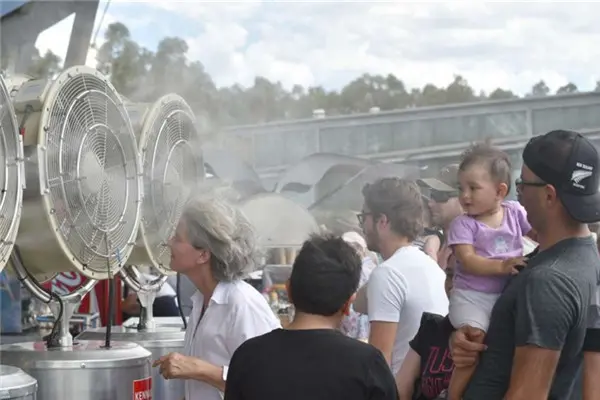A heatwave predicted to stretch across 1,000km of eastern Australia has prompted warnings for the public to avoid physical activity in the sun and stay alert for signs of heat-related illness in others, especially children and older people.
Temperatures are expected to soar above 40 degrees Celcius in parts of central and southern Queensland and New South Wales over coming days , eclipsing the mercury readings in Australia’s tropical north.
The Bureau of Meteorology predicts an extreme heatwave straddling the inland border of both states, with Bourke in the NSW outback and Thargomindah in Queensland’s channel country tipped to reach the highest temperatures of 45 degrees and 44 degrees respectively on Wednesday. The mercury in Thargomindah will hit 46 degrees on Thursday, according to the bureau.
Maitland, north of Sydney, is forecast to reach 41 degrees, while Sydney’s western suburbs will also swelter in 40 degrees on Wednesday.
A total fire ban has been declared in Sydney and parts of the Hunter Valley, while the rural fire service warned of very high fire danger in Queensland’s central highlands and coalfields through to Thursday. Unusually high temperatures in the region are expected over the next three days and into the weekend.
Tony Hucker, director of clinical quality and patient safety at the Queensland ambulance service, said avoiding the hottest part of the day and keeping drinking water at hand was the key to addressing the “very high” risk of heat-related illness.
“If you have to do some physical activity – we’d prefer you’d avoid it – but if you have to, make sure you keep the fluids up,” he said.
Hucker said the onset of heat-related illness, a risk particularly for children and older people, “can be really sneaky”. The telltale signs could be as innocuous-seeming as “a bit of a headache or just feeling a little bit unwell”.
“But if you’re watching other people, particularly outside, that are either exercising or maybe even doing some work in the hottest part of the day, it could be just some subtle abnormal behaviour,” he said.
“Now these people we need to grab straight away and get them into a cool area, get their clothing off, splash them with water and fan them down and get them to drink some water. Now if they’re sick and they can’t drink, that’s an emergency. We need to get the ambulance there as quick as we can.”
Beach-goers on Bondi Beach in Sydney, sweltering through a heatwave with temperatures hovering around 40 degrees Celcius in many parts of the country. Photo: EPA
Surf Lifesaving NSW called on beach-goers to be aware of dizziness, fatigue and headaches as signs of heat stress.
Hucker urged people cooling off with their families at beaches or pools during school holidays to be particularly vigilant with young children.
The warning came after two south-east Queensland children were admitted to hospitals after near drownings. A two-year-old boy was fighting for his life after nearly drowning in a backyard inflatable pool at Morayfield, north of Brisbane, on Tuesday afternoon.
The boy remained in Lady Cilento children’s hospital on Wednesday in a critical condition.
A young girl who nearly drowned in a pool at Varsity Lakes on the Gold Coast was in a stable condition at Robina hospital on Wednesday morning. It follows a spate of drownings this summer in NSW .
“It’s tough I know but the only way to get ready for those potential drownings is to prevent them,” he said. “At the beach, at pools, it’s really important to keep an eye out, particularly with little kids, they can get away from you in a few moments and all of a sudden they can be in the bottom of a pool.”
Hucker also urged people to check on older neighbours to make sure they were OK.
People cool down in front of fans at the Sydney International tennis tournament. Photo: AFP
The RSPCA in NSW urged people to take particular care with pets who faced “potentially lethal heat stress”, noting it could take just six minutes for an animal to die of heatstroke.
Police had already rescued a dog locked in a hot car in western Sydney on Wednesday morning, the RSPCA said.
“Many people are not aware that if you leave your dog unattended in the car, even with windows down and in the shade, there’s still a high risk of heatstroke and potentially suffering a worse fate,” said David O’Shannessy, the chief inspector of RSPCA NSW.
Cars parked in the sun could reach 80 degrees and remain dangerously hot even with windows open, with dogs panting compounding the heat.
Dogs in backyards should not be tethered and needed shade and constant access to drinking water, the RSPCA said.
Weatherzone predicted a “cool change will flush the heat out” of the region at the weekend, however “unfortunately the respite will be short-lived, with warm northerly winds redeveloping across eastern Australia from the beginning of next week”.
(THE GUARDIAN)
 简体中文
简体中文

